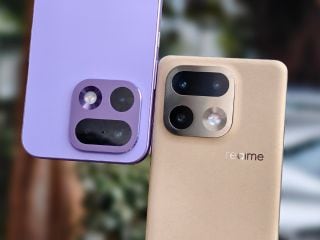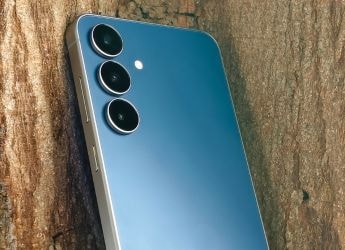- Home
- Mobiles
- Mobiles News
- Leaked Google Guidelines Suggest How It Is Changing the Rules for Android Device Manufacturers
Leaked Google Guidelines Suggest How It Is Changing the Rules for Android Device Manufacturers
Google will reportedly stop approving devices on Android 9 Pie on January 31 next year.
Android device makers need to follow these guidelines to get access to Google Mobile Services (GMS)
Google is introducing new guidelines for Android phone manufacturers that need to be followed to get access to Google Mobile Services (GMS). According to multiple online reports, Google is making changes on a number of fronts, including approval window for devices on older Android versions, availability of Digital Wellbeing tools, USB-C PD (USB Type-C Power Delivery) charging standards, and gesture navigation systems. Some of these changes are already in effect, whereas the other ones will go live in the coming months.
According to an alleged Google's GMS Requirements document that has been obtained by XDA Developers, any Android device that is being launched with Android 9 Pie or Android 10 after September 3, 2019 should come with a Digital Wellbeing solution with parental controls. The manufacturers can opt for Google's Digital Wellbeing app or build their own app with similar features. Same goes for devices getting upgraded to Android 9 Pie or Android 10 after September 3, 2019.
Separately, XDA Developers is reporting that GMS guidelines now include a mandatory requirement for device makers who are launching products with USB Type-C to ensure full interoperability with chargers that are compliant with the USB specifications and have the USB Type-C plug.
Moreover, Google is claimed to say it will stop approving devices based on Android 8.1 (Go edition) on October 31, thus making sure that future Go edition phones either run on Android 9 (Go edition) or Android 10 (Go edition). The company will also stop approving devices based on Android 9 Pie on January 31, 2020, forcing companies to pre-install Android 10.
The leaked GMS Requirements document has also suggested that Google is working on a Gaming Device Certification programme. If a manufacturer wants to say its device supports gaming device certification, it needs to comply to a few requirements. There is no word on when this certification programme will go live.
9to5Google has also managed to get hold of Google's GMS Requirements document and it notes that Google is asking Android devices with Android 10 to come with either the three-button navigation layout or Android 10 gestures. Also, if a company ships a device with Android 10 gestures, then it needs to include the three-button layout as an option. If OEM uses its own gestures, they need to be hidden below the Android 10 gestures and accessible via Settings.
Catch the latest from the Consumer Electronics Show on Gadgets 360, at our CES 2026 hub.
Related Stories
- Samsung Galaxy Unpacked 2025
- ChatGPT
- Redmi Note 14 Pro+
- iPhone 16
- Apple Vision Pro
- Oneplus 12
- OnePlus Nord CE 3 Lite 5G
- iPhone 13
- Xiaomi 14 Pro
- Oppo Find N3
- Tecno Spark Go (2023)
- Realme V30
- Best Phones Under 25000
- Samsung Galaxy S24 Series
- Cryptocurrency
- iQoo 12
- Samsung Galaxy S24 Ultra
- Giottus
- Samsung Galaxy Z Flip 5
- Apple 'Scary Fast'
- Housefull 5
- GoPro Hero 12 Black Review
- Invincible Season 2
- JioGlass
- HD Ready TV
- Laptop Under 50000
- Smartwatch Under 10000
- Latest Mobile Phones
- Compare Phones
- Motorola Signature
- Vivo Y50e 5G
- Vivo Y50s 5G
- Realme 16 Pro+ 5G
- Realme 16 Pro 5G
- TCL Nxtpaper 70 Pro
- OPPO A6 Pro 5G
- Honor Power 2
- Lenovo Yoga Slim 7x (2025)
- Lenovo Yoga Slim 7a
- Realme Pad 3
- OPPO Pad Air 5
- Xiaomi Watch 5
- Huawei Watch 10th Anniversary Edition
- Acerpure Nitro Z Series 100-inch QLED TV
- Samsung 43 Inch LED Ultra HD (4K) Smart TV (UA43UE81AFULXL)
- Asus ROG Ally
- Nintendo Switch Lite
- Haier 1.6 Ton 5 Star Inverter Split AC (HSU19G-MZAID5BN-INV)
- Haier 1.6 Ton 5 Star Inverter Split AC (HSU19G-MZAIM5BN-INV)

















